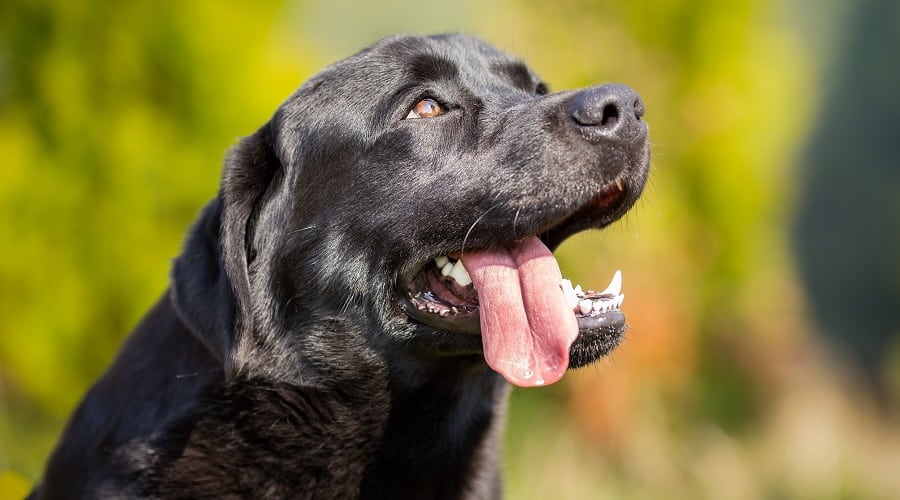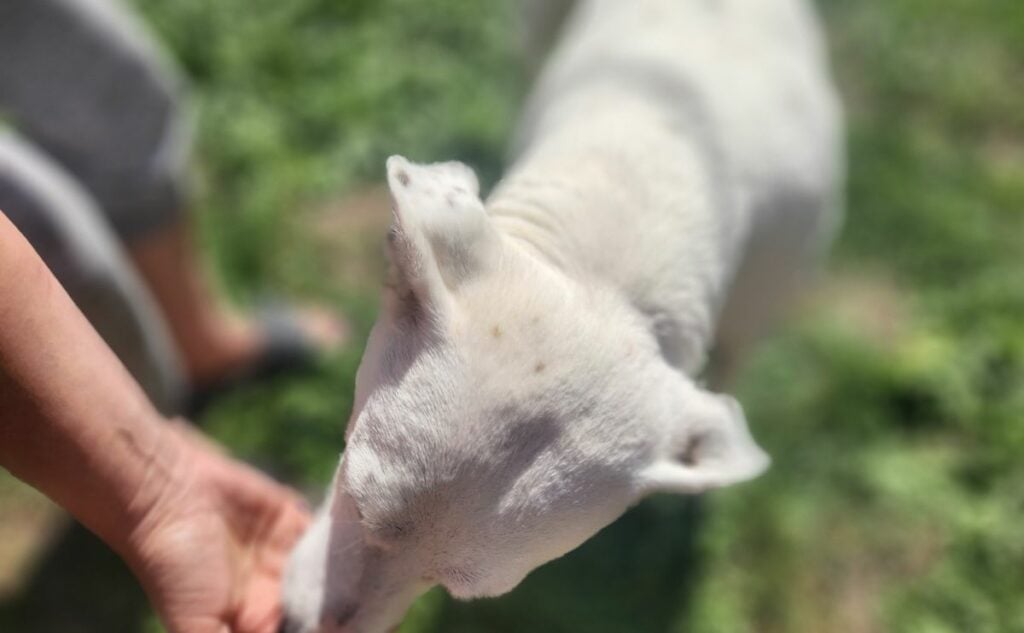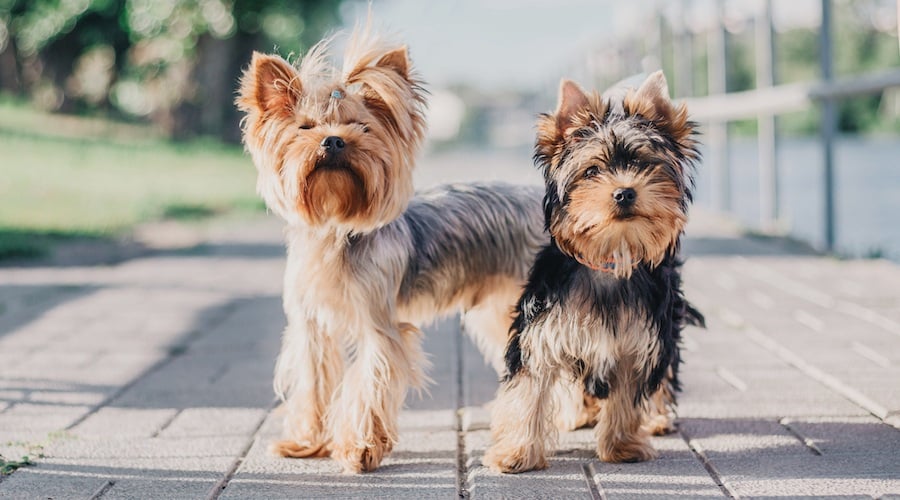The Top 10 Dumbest Dog Breeds – Is Your Pup On The List?
When you purchase through links on our site, we may earn a commission. Here’s how it works.
We’ve all heard the stereotypes: “Bulldogs are lazy,” “Afghan Hounds have nothing going on upstairs,” and “Beagles never listen.” But let’s get one thing straight: just because a dog doesn’t feel like obeying your every command doesn’t mean they’re dumb. In fact, many of the breeds labeled as the dumbest dog breeds are actually some of the smartest, most independent thinkers in the canine world.
Table of Contents
Think about it. Who’s the real genius: the dog that blindly follows every order or the one that looks at you, sighs dramatically, and decides you’re not the boss of them?
In this list, I break down the so-called “least intelligent dog breeds” and expose the truth: These pups might not ace obedience school but have their own special brilliance. Whether they’re expert escape artists, world-class scent trackers, or just too cool to care, these dogs prove that intelligence isn’t all about following orders. It’s about personality, instincts, and knowing exactly how to get away with doing as little as possible.
10 “Dumbest” Dog Breeds
Some dogs live to follow commands, while others seem to have selective hearing, and these breeds definitely fall into the latter category. Whether stubborn, independent, or too busy doing their own thing, these dogs prove that intelligence isn’t just about obedience.

1. Afghan Hound
Most people who are familiar with the silky-coated Afghan Hound will readily admit that they can be one of the most neurotic breeds. The independent nature of these dogs makes them extremely difficult to train. However, they are also affectionate dogs that love to be included in the family pack. Afghans’ are sensitive dogs, which can add to the difficulty level of training them when combined with the high levels of independence.
2. Basset Hound
The lovable face, droopy ears, and bloodshot eyes make this dog an endearing character to most people, but unfortunately, this breed is not one of the most intelligent. The Basset Hound has an amazing sense of smell. When trained well, they can put that nose to the grindstone, but it’s the amount of work it takes to get the dog to that point that fails it. Basset hounds are notoriously difficult to train, and housebreaking them can be a bear, but where they fail in speed learning, they excel in companionship. Bassets make great family dogs but need owners who can stand by them through a rather large learning curve.
3. Beagle
The Beagle often draws people in with their long floppy ears and cute rounded snout, but if you are looking for an easy-to-train dog, the beagle is not for you. This tri-colored breed is a loveable but willful dog and this hardheadedness earns this breed a spot on the “least intelligent” list. Ironically, the beagle is a particularly intelligent and driven working breed, but their bullheadedness earns them a “difficult to train” label. This breed requires a patient owner and early socialization but makes a great family dog when it receives consistent training.
4. Mastiff
Many people see the mastiff as a “dumb ox,” and unfortunately (like the beagle), their hardheaded and independent nature often gets them labeled as unintelligent dogs. Mastiffs have intelligence. However, their reluctance to listen to anyone they do not deem a firm and competent leader earns them the label of “unintelligent.” If this giant breed receives positive reinforcement training from a strong leader and is trained in shorter class periods, they are less likely to be labeled as “dumb.” This is an excellent family dog but one that requires constant training to keep them a manageable and socially acceptable dog because of their size.
5. Pekingese
Ask most dog trainers, and they will tell you that Pekingese is one of the most difficult dog breeds to train. Ironically, most will agree that mastiffs are easier to train! Pekingese are independent dogs with an air of authority that they often get away with because of their small stature. However, as these smaller dogs are babied, their dominating nature continues to grow. These small dogs tend to be affectionate with their “master.” But they often find small children and other animals to be a nuisance. This dog should always receive constant socialization to avoid nipping.
6. Bloodhound
The Bloodhound is an incredibly talented scent hound which is why they are most often used by search and rescue teams or professional trackers. Unfortunately for this hard-working breed, bloodhounds are not considered the smartest of dogs. Bloodhounds make great family dogs and work well with children and the elderly, but they require a firm leader. This breed can cause significant frustration for impatient trainers, but with the right dog trainer, the bloodhound is determined to succeed.
7. Borzoi
The borzoi is not the most well-known dog breed but is well known by those familiar with it for being extremely cat-like. This obsessively clean dog is an independent breed that resembles a cat not only for their cleaning habits but also for their lack of desire to please. Where most dogs are driven only to please their families, the borzoi is not as driven and forces its owner to work hard to train them. Once a dog owner has proven to this breed that they are capable of strong leadership, they are always rewarded with companionship and loyalty.
8. Chow Chow
The Chow Chow or the lion dog is yet another incredibly stubborn dog breed that finds its hardheaded nature, placing it on the least intelligent dog list. Chow chows are very dominant dogs, and without a firm-handed and devoted owner, they are next to impossible to control. If allowed, this breed will take the place of the head of the pack, and while they will always provide healthy companionship, they should not be allowed to dominate.
9. Bulldog
Bulldogs are strong and brave dogs in small packages; however, they are not known for their ability to “catch on” quickly. These short, squat dogs are excellent guard dogs and fantastic family dogs but require a dedicated owner who can work with them repeatedly to train them well. The bulldog is also known for its need for human affection, which can overwhelm owners who are used to more independent breeds. Bulldogs require lifelong training like many of the breeds on this list.
10. Basenji
The Basenji is another seldom-seen dog breed in the United States that is dedicated to living a feline-like lifestyle. This breed is known for hardly barking or for barking in a manner that sounds like human “laughter.” This independent dog is very active and needs a firm owner who is patient and can work with them over time to train them. Basenjis must have proper socialization to develop into healthy dogs.
Misunderstanding Dog Intelligence
Let’s be real: calling a dog “dumb” just because they don’t immediately sit when you say “sit” is like calling a cat lazy because it naps 16 hours a day. Some dogs live to please their humans. While others think, “Yeah, I heard you… but what’s in it for me?” And actually, that’s pretty smart.
The truth is that intelligence comes in different forms. Just because a dog doesn’t follow commands like a robot doesn’t mean they aren’t smart. It just means they might have other priorities (like chasing a squirrel, napping, or pretending they didn’t hear you).

The Different Types Of Dog Smarts
Dog intelligence isn’t one-size-fits-all. Researchers, including dog intelligence expert Dr. Stanley Coren, who wrote “The Intelligence of Dogs,” categorize dog smarts into three main types:
- Obedience Intelligence. How fast a dog learns commands and how often they obey them (aka, the “teacher’s pet” type).
- Adaptive Intelligence. A dog’s ability to learn from experiences and solve problems (ever seen a dog figure out how to open the fridge? That’s this kind of smarts).
- Instinctive Intelligence. What a breed was originally bred for, like hunting, herding, or guarding. These dogs might not care about tricks but excel at their natural skills.
Many breeds labeled as the least intelligent dog breeds score high in instinctive and adaptive intelligence. They just don’t always feel the need to impress their owners with traditional dog tricks. This claim is supported by a study published in 2022 based on 13 dog breeds. These somewhat limited results found that the intelligence of many breeds reflects the breeds’ original or current function.
Why Some Breeds Struggle With Training
Some dogs pick up commands faster than a toddler with an iPad. While others need a little extra motivation (or a really, REALLY good treat). But struggling with training doesn’t mean a dog is dumb. It often comes down to genetics, motivation, and personality. Here’s why some breeds get unfairly labeled as dumb:
- Too Independent. Breeds like the Afghan Hound were bred to think for themselves, not wait around for human instructions.
- Too Focused On Something Else. Beagles and Bloodhounds have noses so powerful that smells are much more interesting than listening to you.
- Just Stubborn. Bulldogs and Chow Chows don’t always care if you’re holding a treat. They’ll do things on their own terms.
- Bred For Companionship, Not Commands. Some small breeds, like the Pekingese, were bred to be royal lap dogs, not obedience champs.

The Role Of Independence & Stubbornness
The breeds that top the “most difficult dog breeds to train” list aren’t lacking in intelligence. They’re just not easily bribed. Independent breeds often have strong instincts, problem-solving abilities, and a high level of self-reliance. They don’t need a human to tell them what to do, and sometimes, they’d rather not do it at all.
So before calling a dog “dumb,” flip the script and consider this: Are they really lacking intelligence, or are they just too clever to care?
How These “Dumb” Breeds Were Ranked
So, how did these dogs end up on the so-called “dumbest dog breeds” list? It’s not just based on random opinions. There’s actually some insight behind it. According to feedback conducted by Canadian and U.S. kennel club judges, dog intelligence was measured by analyzing how quickly breeds learn and obey new commands. The criteria included:
- How many repetitions it took for a breed to master a new command
- How often a breed successfully obey a known command on the first try
Breeds that required the most repetitions and had the lowest obedience rates were ranked as the least intelligent. But let’s be real, that doesn’t mean they’re not smart in their own way. Many of these pups are independent thinkers, scent-driven explorers, or simply too stubborn to care about your training sessions. Of course, I’ve found that that can make these dogs just that much more lovable.
Now that I’ve cleared that up let’s dive into the list!
Are These Dogs Really Dumb? The Truth About Canine Intelligence
Alright, let’s settle this once and for all. Are these so-called “dumbest dog breeds” actually dumb? Or are we just measuring intelligence the wrong way?

The truth is, dog intelligence isn’t just about obedience. If it were, then every toddler who ignores their parents would be labeled “not very bright” (and we all know that’s not true). Many of the breeds on this list excel in instinctive and adaptive intelligence, meaning they’re great at problem-solving, figuring things out on their own, and outsmarting their owners when it benefits them.
Brains vs. Obedience: The Real Story
Dogs bred for working alongside humans, like Border Collies and German Shepherds, are known for their trainability and quick learning. But dogs bred for independent work, like hounds, scent trackers, and guard dogs, tend to have different intelligence. They might not be eager to learn tricks, but they’re incredible at what they were born to do.
Let’s look at some examples:
- Beagles & Bloodhounds – These dogs can follow a scent for miles, but ask them to sit when they’re on a trail? Forget it. They’re too focused on their job to care.
- Bulldogs & Mastiffs – These breeds have been bred for loyalty and protection, not quick reflexes. They’re not dumb; they’re just chill (and maybe a little stubborn).
- Afghan Hounds & Chow Chows – These independent thinkers don’t need your validation. They make their own decisions, and if they think your command isn’t worth their time, well… good luck.
The Case For Stubborn (But Smart) Dogs
A dog that doesn’t immediately follow commands isn’t necessarily dumb. They just have a mind of their own. Independent breeds tend to think for themselves rather than blindly obey, prioritize their instincts over training, and have a strong will, which makes them excellent problem-solvers.
Sure, you may need extra patience to train a “stubborn” breed, but that just makes their victories even sweeter. These dogs may not score high in obedience tests, but when it comes to loyalty, problem-solving, and doing exactly what they want to do, they’re absolute geniuses.
So, maybe we should stop calling these dogs “dumb” and start recognizing them for what they really are: independent thinkers with their own brand of brilliance.
6 Tips for Training Dumb (Independent) Dog Breeds
So, you’ve got a stubborn dog. Maybe your Beagle is too busy sniffing out the next great adventure, or your Chow Chow gives you the cold shoulder when you call them. Either way, training an independent dog breed isn’t impossible. It just takes the right approach.

1. Find Their Motivation (Hint: It’s Probably Food)
Not all dogs live to please their humans. Some are far more interested in what’s in it for them. If your dog isn’t responding to commands, it’s likely because they don’t see a reason to. Find what truly motivates them. High-value training treats or chicken work wonders for many dogs, while others respond better to playtime or a favorite toy. Training should be rewarding, so figure out what gets their tail wagging.
2. Keep Training Short & Sweet
Independent dogs aren’t going to sit through a long obedience lecture. Training should be quick, engaging, and rewarding. Sessions lasting five to ten minutes are ideal, keeping the dog’s attention without frustrating them. Ending on a positive note, even if it’s just a simple “sit,” reinforces success and keeps them coming back for more.
3. Be Consistent – Because Your Dog Is Watching For Loopholes
Dogs are experts at spotting inconsistencies. If you sometimes let them on the couch but other times scold them for it, they’ll quickly learn that rules are negotiable. Use the same commands every time and enforce rules consistently. If “no begging” is a rule, it applies even when they flash those irresistible puppy eyes. Stubborn dogs test boundaries before accepting them, so stand firm and stay patient.
4. Socialization Makes Training Easier
Many independent breeds also tend to be aloof. Early and frequent socialization helps them become more adaptable and responsive to training. Take them to different environments, introduce them to new people, and expose them to various sounds and experiences. A well-socialized dog is more confident and less likely to ignore you in unfamiliar situations.
5. Turn Obedience Into A Reward
Stubborn dogs don’t respond well to commands that feel like orders. Instead of demanding obedience, make it rewarding. Positive reinforcement encourages them to see training as beneficial rather than a battle of wills. Some breeds, like working dogs, respond well when given a job, such as carrying a backpack on walks, fetching specific items, or participating in agility exercises. Keeping training interesting prevents boredom and improves engagement.
6. Know When To Laugh It Off
Some dogs will never be perfectly obedient, and that’s okay. Independent breeds have strong personalities, and that’s part of what makes them so lovable. Instead of getting frustrated when your dog decides to ignore a command in favor of staring at a squirrel, embrace the quirks. Training is about progress, not perfection.
Final Verdict: Smart In Their Own Way
Training an independent dog breed isn’t about forcing obedience. It’s about working with their natural instincts. With patience, consistency, and the right motivation, even the most headstrong dog can learn to listen. And when they do, it’ll feel even more rewarding. These dogs may never be obedience champions, but they bring loyalty, personality, and plenty of laughs. If you’re anything like us, you love to watch funny dogs doing dumb things, so I’ve found this video compilation of dog fails.
And What About The Smartest Dog Breeds?
Looking for the pups that, unlike these lovable doofuses, will make you blink in wonderment as they open doors, answer questions with paw motions, and bring you the morning paper? Check out our list of the smartest dog breeds for a comprehensive, in-depth list of the most intelligent dogs on the planet.
Games & Toys For Dumb Dog Breeds
Dogs may not always follow commands, but they never usually turn down a good toy. The right toys can provide mental stimulation, physical exercise, and even help with training. Interactive toys and snuffle mats challenge dogs to think and problem-solve, keeping their minds engaged. For strong chewers, tough chew toys made of durable rubber or nylon can keep their jaws busy while preventing them from gnawing on furniture. Flirt sticks, which look like giant cat toys, are perfect for engaging a dog’s prey drive and providing a fun workout, especially for high-energy breeds. Meanwhile, brain games can keep independent dogs entertained while reinforcing training skills. Whether your dog loves chasing, chewing, or solving puzzles, there’s a toy that matches their personality and play style.

Are you the proud but maybe frustrated owner of one of these dumb dogs? Perhaps you think we should add another breed to this list? Let us know in the comments below.



